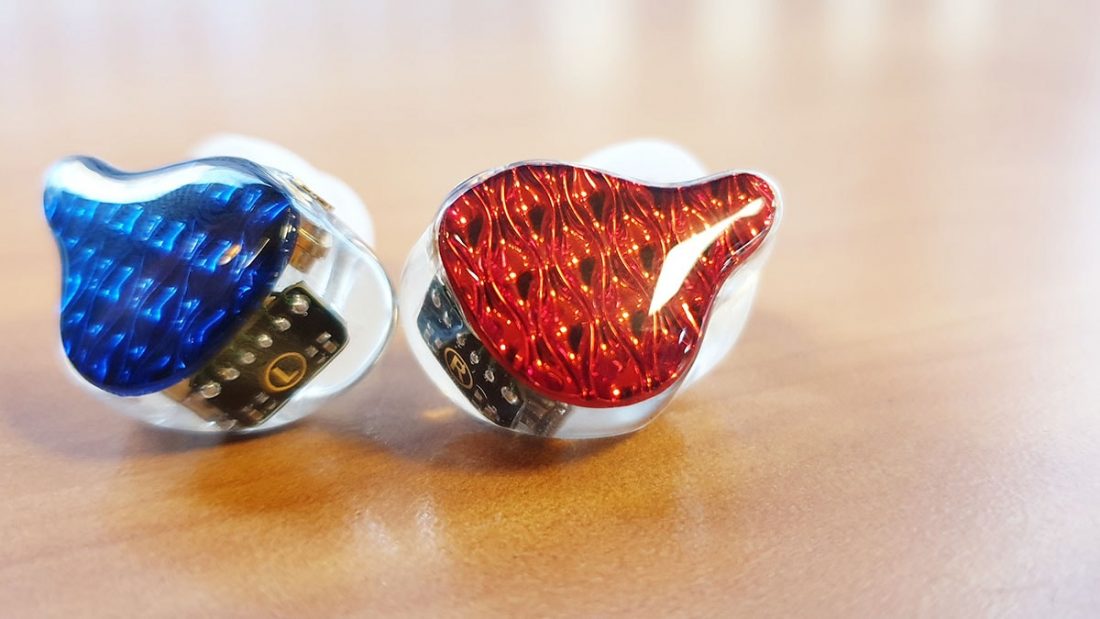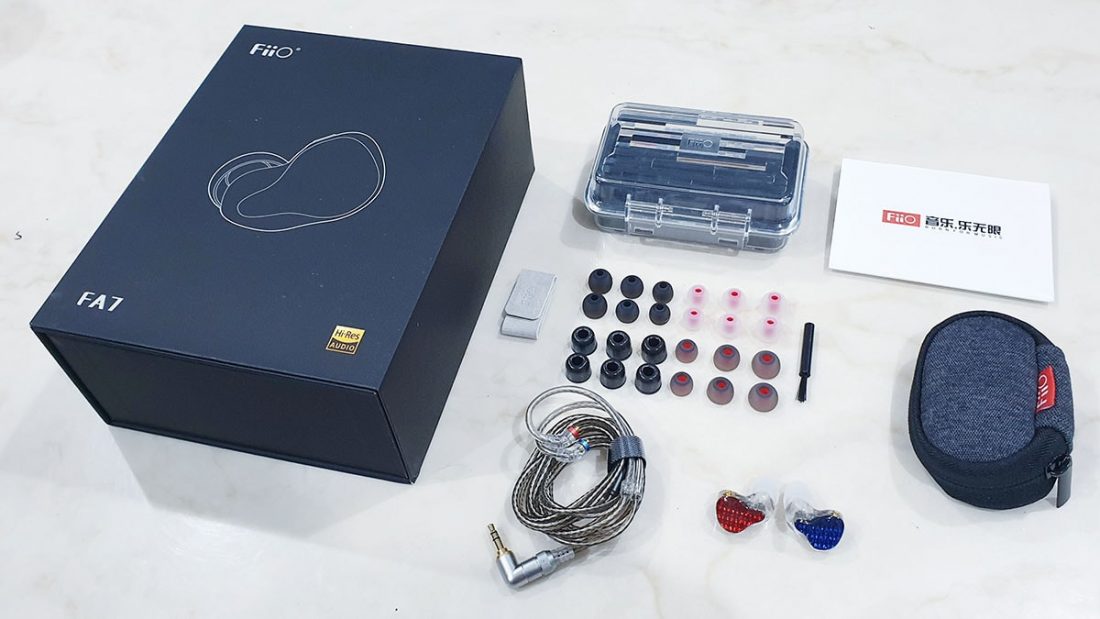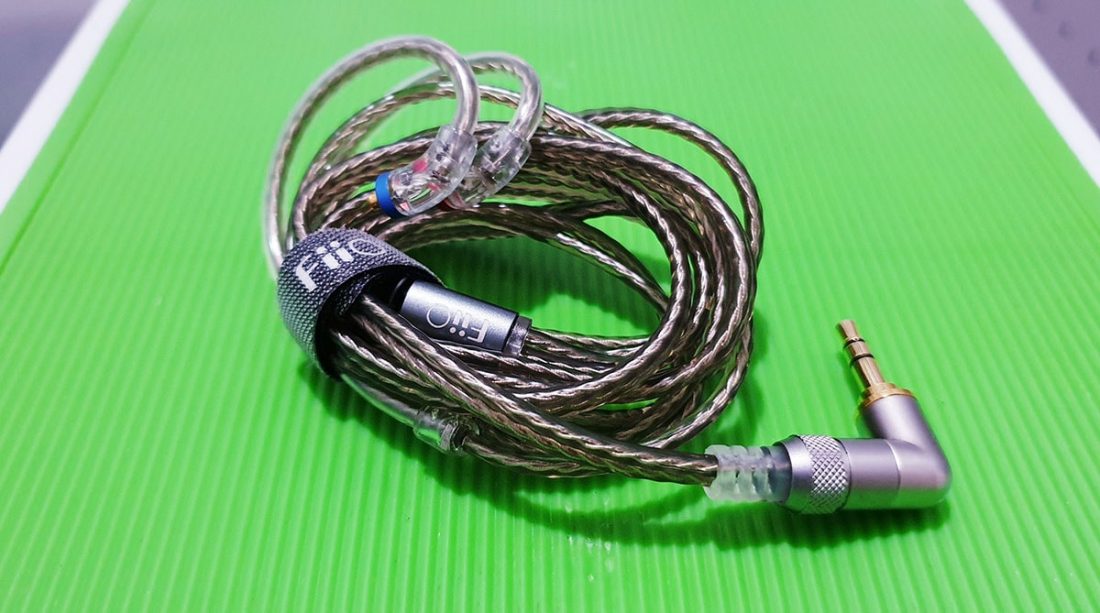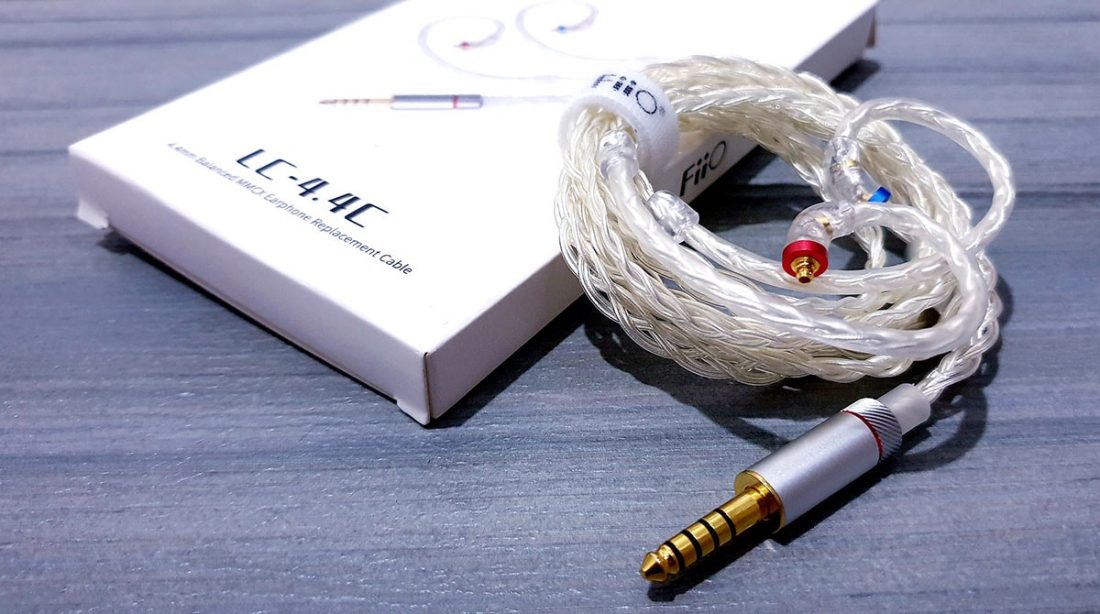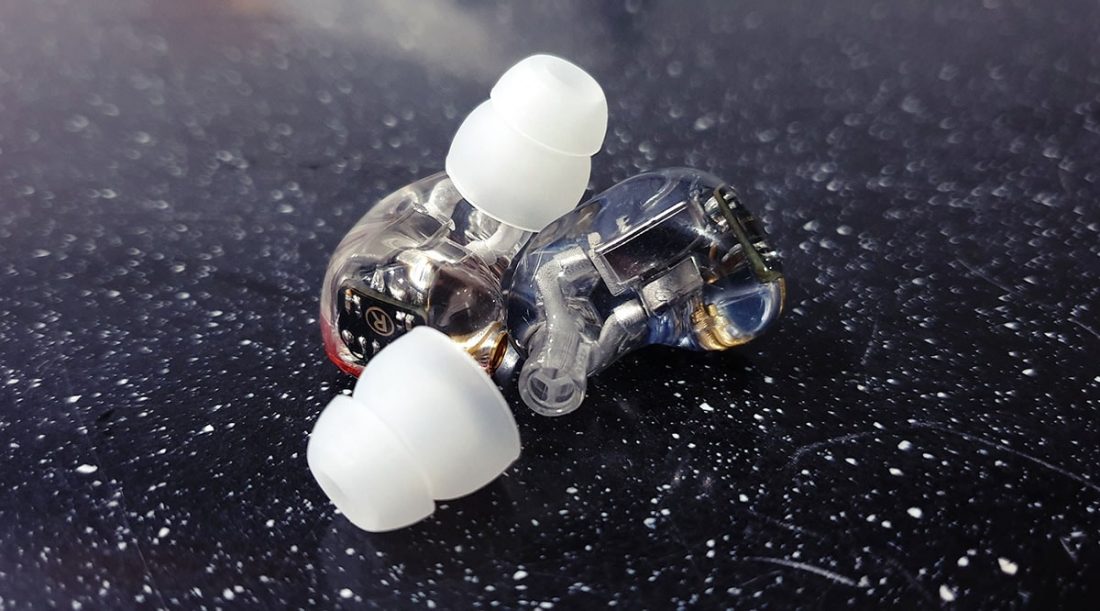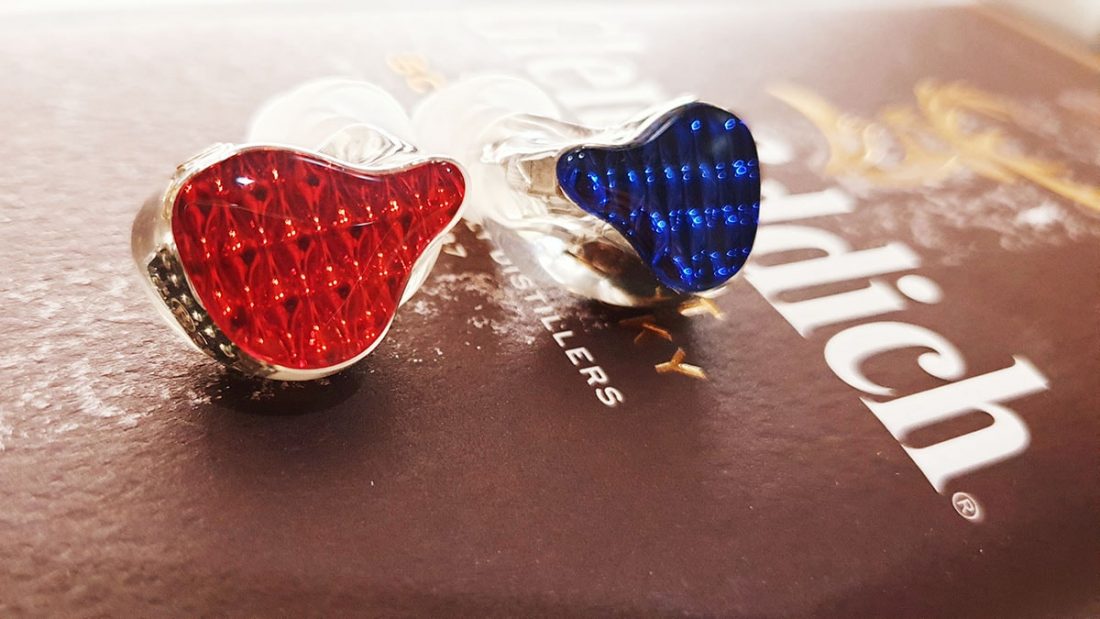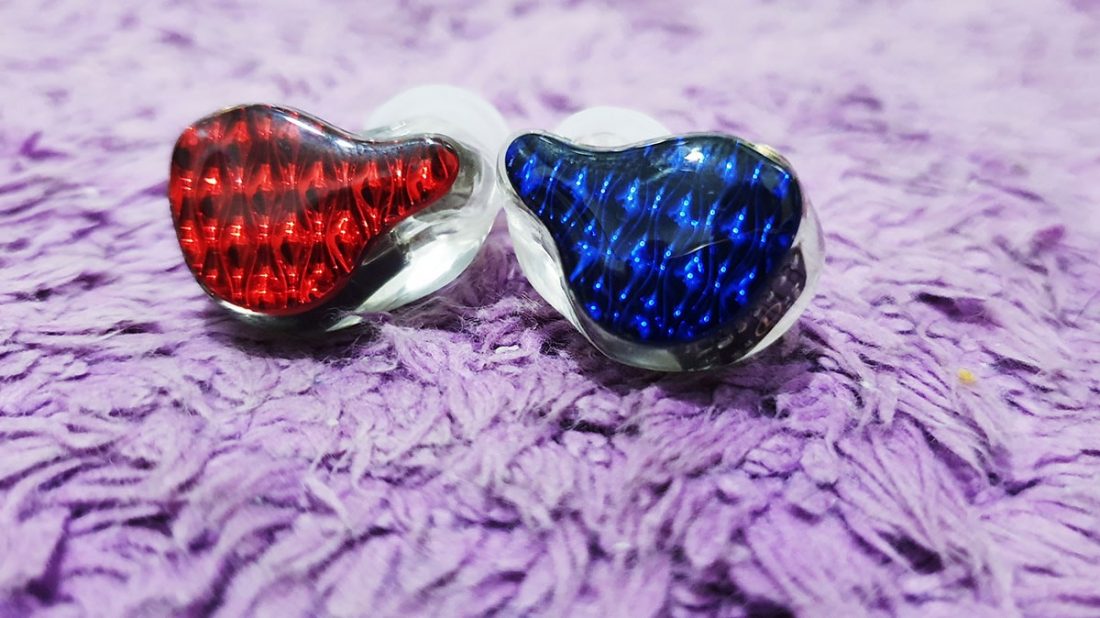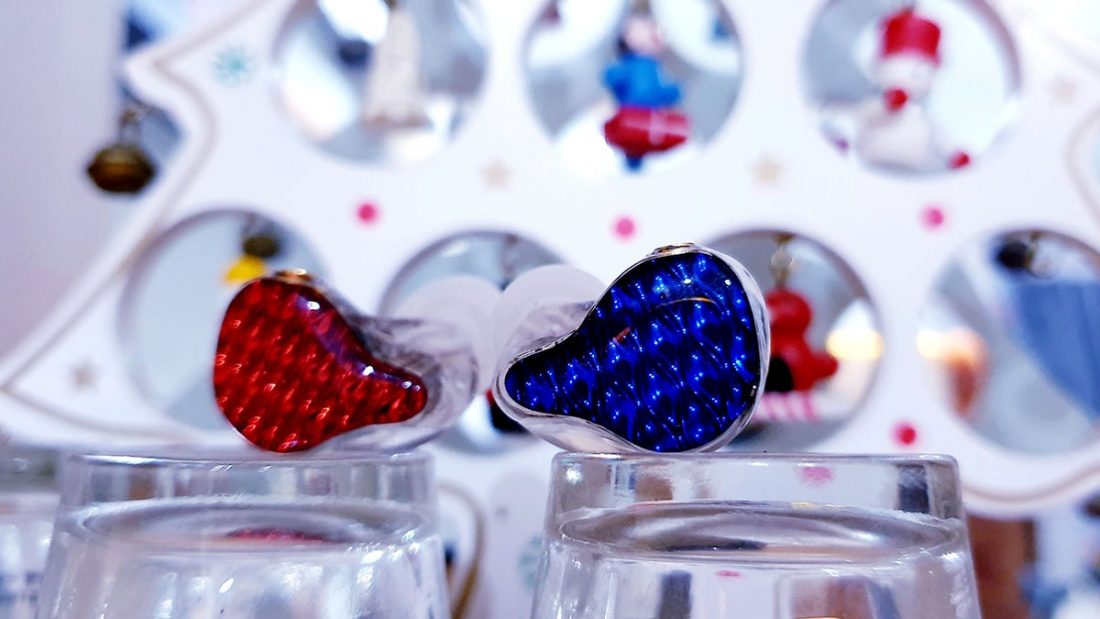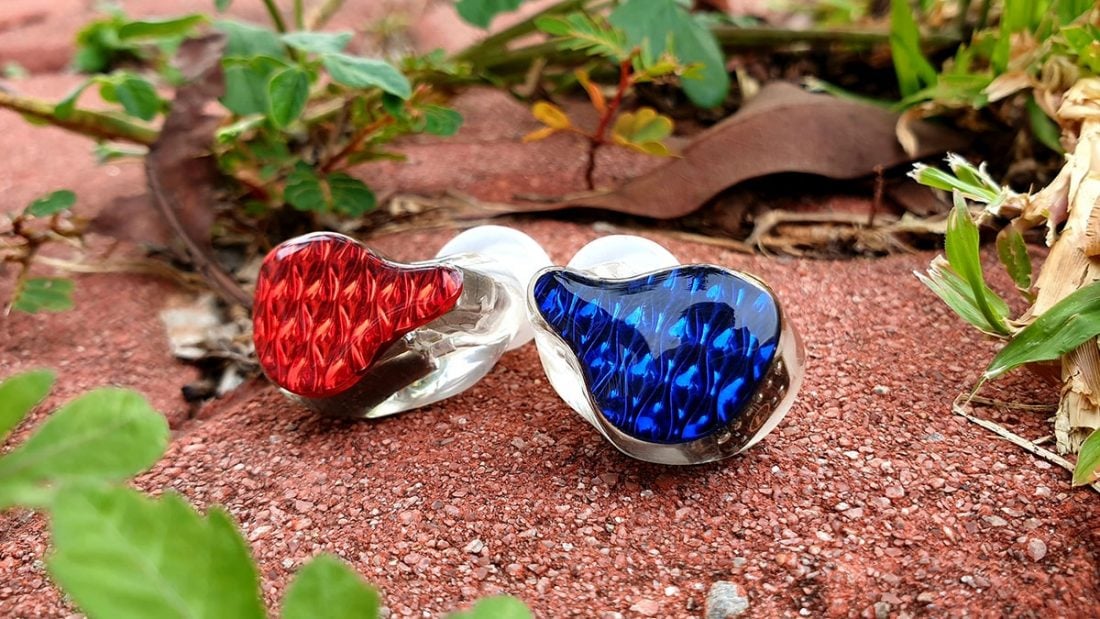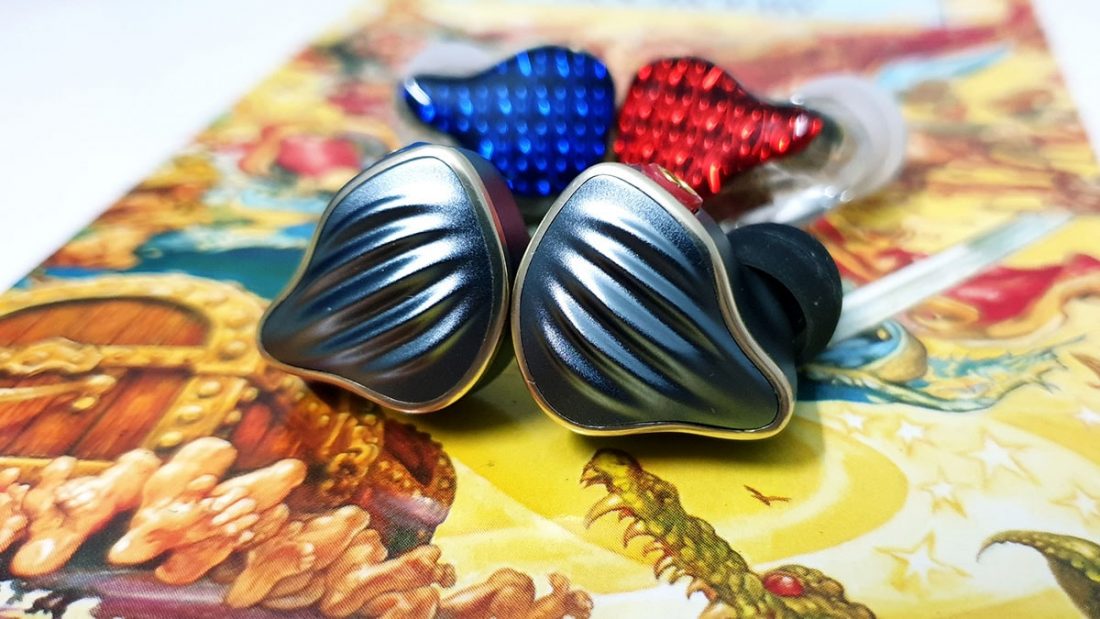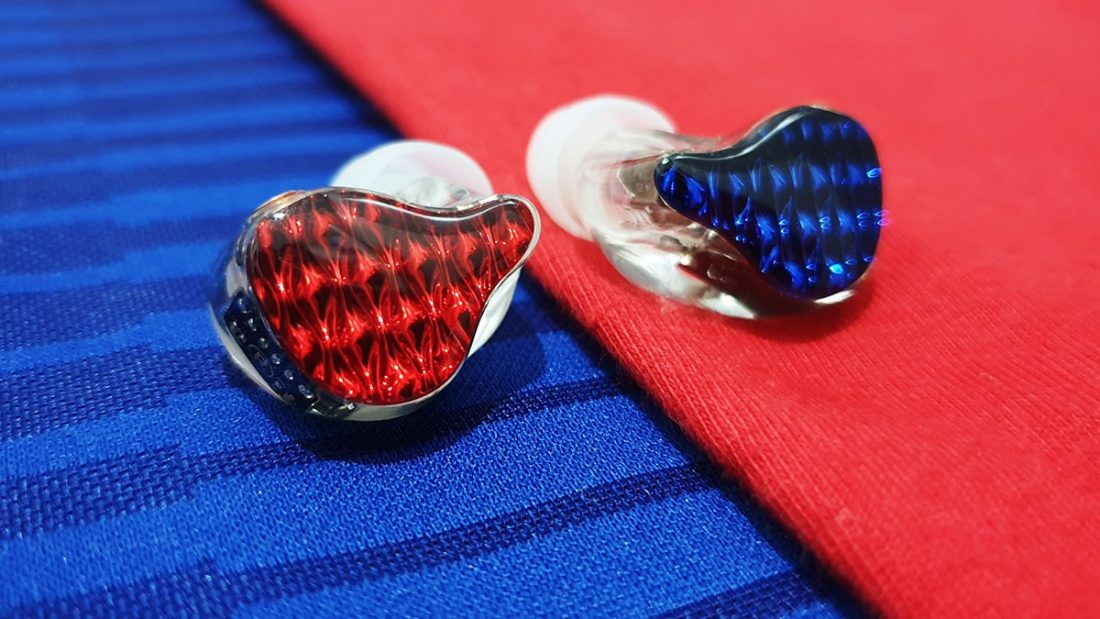I love music; it’s why I’m here. That’s the understatement of the year. In my youth I was compelled to share the music I loved—and I’m showing my age here—by making cassette mixtapes. Who among us hasn’t shared our futile expressions of love via the media of song, only to be spurned by the object of our affections because she’s already dating a dude named Chad?! I digress. At least I got to keep the mixtape, which contains my entire outlook on life at that moment captured in song. It’s my personal greatest hits and nobody can touch that. FiiO, from the looks of it, seems to be compiling what surely is their greatest hits collection. They have an expanding catalog, nay an entire ecosystem of portable audio slowly unfolding upon the unsuspecting world.
Greatest Hits
From digital audio players (DAPs), portable amplifiers, cables, in-ear monitors (IEMs), and even IEM cases, FiiO has got you covered. Their latest line of products is a multi-pronged attack on our pockets, ears, and consciousness. Each new release has been greeted with more fanfare than the last. If we believed in such a thing as an ‘endgame,’ it would appear that this is where FiiO is headed (note that most grizzled audioheads do not believe in such fairytale nonsense as perfect components).
Today we take a look at the flagship of their balanced armature (BA) lineup of IEMs: the FA7. Positioned as the cousin to the extremely well-received FH5, the FA7 is similar in price and design, but entirely different in build, in-house technologies, drivers, and sound. Meaning FiiO wants you to buy both, lol.
Heroes in a Half Shell
The FA7 features four Knowles BAs—1 bass, 1 mid, and 2 treble—configured with a four-way crossover and housed in a 3D-printed, medical-grade resin shell. If this sounds like how custom IEMs (CIEMs) are constructed, well yeah that’s pretty much it. But FiiO, being FiiO, flexes their mass-producing muscles as no boutique CIEM company can, allowing more people to enjoy their stuff while paying less.
Equipment Used:
DAP
Sony NW-WM1A “K” Modded, FW 2.0
IEMs
FiiO FA7 FiiO FH5 FiiO FH1
Albums
Aaron Neville – Warm Your Heart Art Pepper – Modern Jazz Classics Daft Punk – Random Access Memories Diana Krall – From This Moment On Fleetwood Mac – Rumours John Mayer – Continuum Macy Gray – Stripped Meiko – Playing Favorites Michael Jackson – The Essential The Weeknd – Starboy
Packaging and Accessories
Unlike some vital parts of my anatomy, I’ll keep this short. The FA7 packaging is nearly identical to that of the FH5 and hard to tell apart without close scrutiny, sort of like the Hemsworth brothers. The two FiiO models share the same black box with different artwork, the same brilliant case, 3.5mm cable, and throwaway accessories like the cloth pouch and cleaning tool. But one important change is in the updated ear tips. The three sets of silicone ear tips are still there for bassy, vocal-centric, and balanced sound in small, medium and large sizes. Ditto the three pairs of medium-sized foam tips. Responding to complaints that the FH5 had short nozzles that prevented a good seal, FiiO included a pair of silicone double-flanged ear tips for extra-deep insertion. Oh behave. So that’s a lucky total of 13 pairs of ear tips at your perusal or disposal.
Design and Build Quality
FA7’s design language is “inspired by nature,” with a fluid, contiguous shell and faceplate motif drawing inspiration from gentle streams, turbulent waves, or taking a whizz by the road. It is, though, undoubtedly pleasing to the eye. I could stare at the faceplates for hours; they carry a hypnotic quality like watching hot dogs cook on a roller. As for the build, FiiO is pretty proud of its materials and 3D-printing technology. The earpieces are made of German high-transparency, skin-friendly resin and come with EU IIA medical device (!) certification. The resin is resistant to discoloration too, implying that the FA7 will maintain its clean, transparent looks for years to come.
More tech talk
FiiO collaborated with 3D printing specialists HeyGears, using industrial-grade printers with digital light processing (DLP) technology and a printing resolution of up to 25um. Each earpiece is precision-printed for 60 minutes, promising consistent sound between different pairs of FA7 and ensuring that unit variances are minimized. This is the part not inspired by nature. For the common folk (which includes me), the FA7 is a well-designed and well-built piece of work that hopefully withstands the tests of time and grime.
Cables
The stock cable LC-3.5B is identical to that of the FH5: a sheathed, monocrystalline silver-plated copper cable which comes in a double-barreled design. The build quality and attention to detail are—of course—impeccable, and the cable handles quite well, if just a bit on the heavy side. Do you believe in making small concessions for big sound quality? I do. It’s a well-thought-out cable that is not only durable but sounds better than most other bundled stock cables on the market. FiiO is quietly making headway in the cable department, with the R&D department tinkering and releasing new cables around the same time as new IEMs.
FiiO LC-4.4C
Naturally, I asked Lily to provide their latest and greatest cable to see if it’s a good match for the FA7. She was kind enough to provide the LC-4.4C balanced cable for my Sony WM1A. Let’s talk about this baby. The LC-4.4C is made of 8 strands of high-purity monocrystalline silver-plated copper. Each individual strand contains 19 wires, and is lovingly sheathed with transparent thermoplastic urethane (TPU) imported from Germany, before being hand-woven to complete the cable. FiiO likes collaborating with Germans, eh? First the resin, now the TPU sheathing.
Fine lines
There is meticulous attention to detail. I like how the MMCX connectors are marked red for right and blue for left, making them easy to recognize and plug in. The matching matte silver 4.4mm jack, Y-split and chin slider are aesthetically pleasing too, looking marvelous alongside the transparent white cable. It’s built to please the eyes and ears and wallet. My only complaint is that the hand-weaving might be a bit suspect. I prefer tighter, more disciplined braids; but then again, the loose weaves might have contributed to the superb comfort and handling of this cable. It is infinitely more posable and flexible than the stock LC-3.5B cable and lighter too, so I’ll let the one complaint slide.
A sound supreme
As for the sound properties, the LC-4.4C is a step up from LC-3.5B. Not only does it convey more detail and higher resolution across the spectrum, it does so without sacrificing the FA7’s superior mids tone and timbre, a highlight for this IEM. The LC-4.4C conveys an effortless, roomy presentation, sounding more technically sound and spacious but never in-your-face and aggressive. He’s friendly!
Fit, Isolation, and Comfort
I thought FH5 was comfortable, but the FA7 is really something else: a different beast and feast. The compact shell design slides right in and fits snugly, subsequently disappearing into my ears like the emperor’s new (nude) clothes. I could insert them all the way into my canals and lie on the side while listening. This level of world-ending, mind-bending comfort approaches that of custom IEMs. They’re that good! Thanks to the long nozzles, all ear tips provided by FiiO seal quite well. As for isolation, with the double-flanged ear tips and the deep insertion, I was able to attain the sense of tranquility and peace that can only be achieved by reaching a mountain’s summit, wandering into a soundproof chamber, or being completely deaf. That is an exaggeration of course, but not far from the truth. With much kudos to the updated design, FA7 easily isolates 80-90% of outside noise provided you use the included double-flanged ear tips and go really, really deep! Like deep-sea diving for, uh, fresh seafood.
Sound Quality
Overall sound signature
When looking lost in a foreign land, people tend to approach and help. Touched, you make it a point to be just as courteous back home because what the world needs now is love, sweet love. Of course, all that love stuff is forgotten when someone abruptly cuts into your lane and you curse inwardly. Ah well. Just remember your time on vacation and the warmth you felt. The FA7 sound, too, is warm and inviting. It has an elevated midbass and lower mids for a full-bodied, meaty sound. Before the signature becomes too rich and syrupy (think drinking pure honey, lol), there is a lower treble bump for some airiness and spaciousness, essentially making this an L-shaped signature. So we have a warm-tinged monitor that’s useful for extended, relaxed listens, but balanced with good levels of detail, resolution, and crispy note texture to spice things up in the bedroom. Yes. If you’re too tied up to finish the rest of the review, let me just say this: the mids are superb stuff. Or in broken Italian: primo grado.
Listening conditions
Critical listening was done after 50 hours of burn-in. It’s a formality more than an attempt to affect sound quality, frankly, since BA-based IEMs should sound as good as they are out of the box. This is to keep burn-in enthusiasts quiet, ok? Lol. The main review rig was Sony’s NW-WM1A Walkman modded by Project K with the stock cable. The ear tips of choice were the double-flanged silicone tips, which gave me not only the best fit, but near-perfect seal and isolation.
Bass
I’m writing this during Mother’s Day, so it’ll be a bit sappy. Imagine you alone in the universe, fending off the world on your own. You yearn to be a kid again, safe in the arms of your mother. Like any mom, she tucks you in when you sleep so you don’t catch a cold. And like the horrible kid you’ve always been, you kick away the blanket after a while. Even in unconsciousness, you defy her, lol. FiiO’s FA7 wraps the signature in a warm blanket. Whatever the weather, you ain’t gonna catch that cold! The sub-bass and midbass are generously enhanced, providing warmth like a bowl of chicken soup. Extension is fine with rumble that is easily felt, and all things bass are executed admirably. There are good impact and note body, with tonal richness, smoothness, and authority available in spades.
Suffering for love
However, the gooey richness sacrifices other aspects of the bass, like a love that’s welcoming, but suffocating. Notes are thick and dense, with a slow, plodding decay. Speed is suspect and the bass lines linger past their welcome, affecting layering and bleeding into the mids sometimes. Details suffer too, with rounded-off note edges that mimic crushing blows via mittens. Of course, the FA7 bass sets off with the best intentions, providing a smooth, buttery bass that doesn’t lack on impact, even if it suffers in technical ability. Accept it with open arms for what it is: a bass only a mother would love.
Mids
Like peering and leering into the irises of your one true love (or loves, who am I to judge), FA7’s mids aim for the heart and soul. The tone and timbre of the mids are spot-on, sounding natural as ever. It carries over much of the qualities of the bass with one key change: it dials back the thickness and haze, reaping instant rewards in the process. The bass warmth carries over to the lower mids splendidly. Male vocals and string instruments have a keen presence, sounding inviting, rich, and fully-formed. Guitars and pianos sound strikingly accurate, with note density balanced by a quick decay. Upper mids are euphonic and airy, rendering female vocals and emotional rollercoasters effortlessly without evidence of grain.
Nurturing for love
Notes are neutrally-placed, with transitions velvety smooth and oh so fluid. The FA7 eschews any need to show-off in favor of pure, unadulterated organicism and musicality. Each note is coherent, evenly shaped and lovingly sculpted, being richly-layered and wonderfully-textured, yet not lacking in detail. My only nitpick is the overall speed and resolution of the mids; there is some smudging if tracks are too fast and demanding. But the tuning and timbre give a graceful naturalness to the tuning of these accomplished mids and are enough to win me over.
Treble
At this point, you’re probably aware that the FA7 signature is akin to a gentle breeze, with a non-aggressive, harmonious approach to rendering music. The treble continues the zephyr-like serenity, with a slight lower treble bump so it isn’t too bogged down by the overall warmth of the signature.
All for love
The treble makes its presence felt non-threateningly and non-confrontationally: not unlike a diplomat in times of peace, fostering relations through goodwill and maybe a few drinks. It rises early, at the lower treble, bringing some attention and crispness to cymbals and percussion. It evens out the further up we go, integrating with the rest of the signature seamlessly. It lacks some extension at the upper treble but allows enough air to permeate the signature. Up here, the notes are smooth, rounded, and forgiving, never approaching the sibilance zone and providing just a hint of sparkle to stay exciting. Its boisterous, swashbuckling days might be in the past, but the steady reliability of a safe, tuneful treble will satisfy most.
Soundstage and imaging
Now, the trouble with a warm, smooth, and coherent signature is that soundstage dimensions and imaging capability almost always take a hit. It’s not a massive hit per se, but the spatial qualities will never be the highlight of the FA7, not when the tuning takes front and centrestage.
Intimacy and uh, love
Here, the FA7 displays a good amount of width, with an accomplished left to right differentiation. You’ll have no problem picturing the instruments and vocalists laid out in front of you, like those hipster photographs with the contents of someone’s pockets or messenger bag arranged meticulously on a table. Each element occupies its own unique space, separated by adequate black space in between. For depth, height, and front-to-back layering, however, the FA7 is average at best. The warm air injected by the elevated midbass and overall thick notation congests things somewhat. You won’t have a window-clear picture of, say, a full orchestra performing because the separation and imaging are simply not at that level. Simpler arrangements, sure, but the FA7’s greatest strengths lie elsewhere.
Comparisons
FiiO FH1
I’m bringing the whole family in. The FH1 ushered in a watershed moment for FiiO hybrids, with exquisite attention to detail across aesthetics, comfort, and sound regardless of price. The FH1 marked the first time I was genuinely interested in FiiO IEMs and my inaugural review with Headphonesty reflected that.
A class below
So where does the FA7 stand alongside FH1? The simple answer is head and shoulders above. Sharing similar lush, organic, and warm characteristics, FA7 nonetheless stands out in sheer technical superiority. Notes have much better definition, shape, and differentiation, while music effortlessly flows together, creating an easygoing, coherent atmosphere that is praiseworthy. In comparison, FH1 sounds slower and bloated. It has less end-to-end extension and there is a definite lack of air, space, and spatial definition when listened to back-to-back. While it’s no slouch in musicianship, the FH1 falls apart on critical listening. Obviously, you have to keep in mind that FH1 is priced at a quarter of FA7, but it’s easy to see FA7 winning this.
FiiO FH5
The universe is filled with tough questions, and one most often asked is whether to get the evergreen FH5 or the brand spanking new FA7 if you had $300 lying around. I reviewed the FH5 very favorably not too long ago. In truth, they are different enough to own both, but you don’t want to hear that, you want a duel with blood! The FH5 takes on a more vibrant and aggressive approach, with airy and detailed mids anchored by deep, delicious sub-bass and a crystalline treble with enough sparkle to spare. It’s fun and wows at first listen, and to this day remains my benchmark for its price range. The FA7 may not be able to usurp it, but it takes another approach.
Battle studies
Compared side-by-side, the FA7 sounds warmer, more musical and fluid overall, with a relaxed, laidback presentation like easing into your favorite lounge chair. The signature is more evenly dispersed, with less sub-bass thump and treble brightness, and wetter, more luscious mids that enchant in their own way. Technically, they are pretty even in terms of extension and note definition. I much prefer the naturalness of the FH5’s bass (thanks to the dynamic driver), but am equally smitten by the organic and buttery mids of the FA7. Soundstage dimensions are similar, with both having adequately wide stages, but FH5 is airier with better separation. So in truth, different strokes for different blokes. FH5, being so adept at modern genres, is definitely more dynamic, engaging and something to show off to your friends. FA7 is more coherent, reserved and refined, favoring vocal-centric music and jazz. If pushed for an answer while dangled at the side of a building, I’d choose the FH5, but I would be equally happy with either.
Final Words
Following up a classic is a monumental task. The Beatles did it, releasing Sgt Pepper after the zenith of Revolver, but then they’re superhuman. Radiohead followed-up OK Computer with a 180-degree turn and churned out Kid A to confused folks. Coming up with the sequel to Pet Sounds nearly broke Brian Wilson and the Beach Boys. It wasn’t for the faint of heart. FiiO might not be in the same league as those musical legends, but they have a legacy to protect and a legion of well-regarded products to succeed. FiiO risk being redundant with FA7’s release, especially so close after the crowd favorite FH5. With the same driver count and similar price tier, why bother? What more could it possibly offer?
Bumping and grinding
But FiiO is adamant and march to the beat of their own bum. The FA7 can be described as an evolution of the FH5, taking into account the various issues of the older model and coming out with improvements across the board. This is, bar none, FiiO’s most comfortable and best-fitting IEM to date. The looks, accessory set, and build quality are as good as ever, which leaves only one thing left to judge: the sound. Thankfully, FiiO has some serious tuning chops and, for the most part, know what they’re doing. For those who thought the FH5 too aggressive, or too youthful (sound signatures according to age, why not?), FA7 is the answer, featuring a warm, inviting signature that is as accessible as it is pleasurable. Would I recommend it? Yes, it has too many merits of its own to ignore. In particular, the highly impressive mids tuning is simply awe-inspiring at any price. The FA7 is another stepping stone in FiiO’s evolution to be a portable audio juggernaut, and from where I stand, the best is yet to come.
